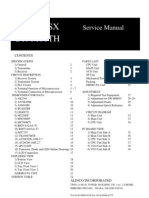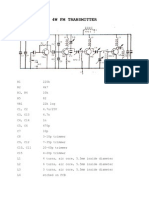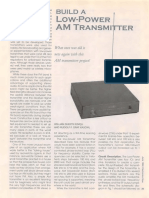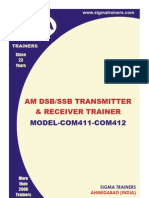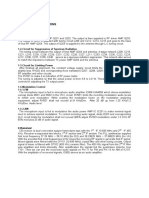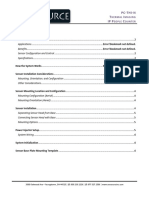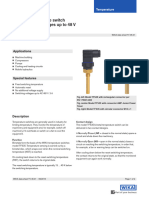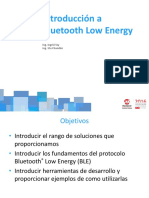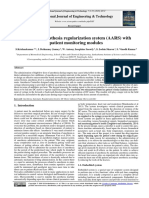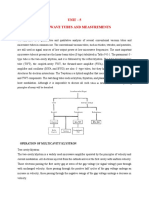I,- Russian -+ English v V
Search the site
Home Schemes Laboratory Articles Tutorial Links Directory CatArt About the
project
Forum
Doll
/ RadioCat > Circuits > Analog circuits > Receivers and transmitters >
Article tags: I
Add tag ]
Amateur Broadcast Transmitter
Author: Alexander Seliverstov
Published 05.22.2012
Created with KotoRed .
When creating an amateur broadcasting radio station, enthusiasts first of all face the problem of designing broadcasting equipment. A quick stud
forums shows that there are almost no transmitter designs with good repeatability available even to a novice radio amateur.
The main problems for beginners are around the adjustment of high-frequency circuits, where experience is needed and not always available anc
decade, steel
Modern components are widely available that, with the right approach to circuit design, can create a transmitter that requires no tuning at all or
at the cost of the number of components used.
The FM broadcast transmitter described in the article was developed taking into account that
its repetition would be accessible even to an inexperienced radio amateur. All you need are
parts, a board and accuracy in installation. A regular
tester will be enough for setup, and you already have a computer, since you are reading this.
�The transmitter's specifications are a reasonable compromise between
construction complexity, output power and signal quality.
Here they are:
Supply voltage 11-15 V
Current consumption at an output power of 50 W is no more than 9 A
Current consumption at an output power of 10 W is no more than 3 A
The transmitter remains operational when the supply voltage drops to 8 V,
while the output power is below the nominal value
The transmitter provides stabilization of the output power at a load of 50 Ohm and protection
when operating on a load with a high SWR value
The harmonic content in the output signal is no more than -65 dB
The transmitter indicates the load SWR values \u200b\u200bby indicator segments corresponding to
different SWR values
The transmitter has microphone and linear stereo inputs with separate
gain control for each input
The LCD indicates the level of the low-frequency signal entering the modulator by a scale of 6
segments. The last segment means overload.
The transmitter has a headphone output for operator control of the signal with
volume control; when the headphones are disconnected, a small built-in
loudspeaker is turned on.
In terms of signal quality, there is full compliance with the technical description for
the si4711-a20 microcircuit.
�The transmitter circuit can be divided into several functional units: power supply unit, low-frequency signal processing unit, control and indicatior
amplifier, and protection circuits.
""'
RHj
lllo~LE,J!1
The power supply unit consists of a reverse polarity protection circuit (Kl, VDl, VD2), a power supply filter (Cl, Ll, C2) and stabilizers DAl, DA;
power supply circuits of the low-frequency part, the control and indication unit are separated from the power supply circuits of the power amplifiE
mutual interference. The DAl microcircuit (circuit No. 4) provides a stable +3.3 V power supply to the si4711 master oscillator microcircuit and t
microcontroller. The power supply filter will be useful when using the transmitter in a car or when operating from power sources that produce a le
output. When operating from a stabilized power source in stationary conditions, it can be omitted.
.1...t;,m
The low-frequency signal processing unit is a regular stereophonic two-channel mixer on operational amplifiers DA3, DA4 and DAl, DA2 (diagran
additional amplification for signals fed to the microphone input. The output signal detector on diodes VD3, VD4 transmits information about the i1
the microcontroller to provide its indication on the LCD. Variable resistors
Rl7 and R3(2), R4(2) regulate the signal level from the microphone and line input, respectively.
.Cl~-L. ,..
:1..
""T
,,.
"'' ~
...
� l(01JB1!/'1
Qr'
The DA1(3), DA2(3) microcircuits are used to assemble a signal amplifier for monitoring radio transmission by the operator using headphones. Fi
headphone jack along the signal circuits to eliminate interference when the transmitting antenna is located as close as possible. When the headp
jack, radio transmission is monitored via the built-in speaker. The monitoring volume is adjusted by the variable
resistor R5(3).
4. BY I yr1paB118HMe
The control and indication unit is built on the atmega321 microcontroller and the DV16236 liquid crystal indicator. The clock frequency of the micr
frequency of the master oscillator are stabilized by a quartz resonator at a frequency of 4 MHz.
If the used quartz resonator requires frequency adjustment, then you can install the capacitor C22 on the board and adjust it. Resistor R22 is ins
built-in backlight. There are many analogs of the used LCD, some of which differ in power supply wiring: it can be reversed.
When using another LCD, carefully look at its power supply circuits!
The master oscillator is built on the si4711 microcircuit, which contains a VCO, frequency synthesizer, stereo encoder and RDS encoder. With pro1
with the ratings of the parts, the circuit starts up immediately and does not require any adjustment. The high-frequency signal level at the outpu
mW.
The power amplifier is three-stage. The preamplifier uses a DA3 microcircuit of the ABA54563 type, which has proven itself well in various frequE
inexpensive (less than $1). At its output, the signal level is about 40 mW. A control detector is implemented on the VD6 diode, which provides in
about the presence of a high-frequency signal at the output of the preamplifier microcircuit .
..
Attenuator Rl-R3 slightly weakens the signal, improving matching and protecting the next stage from overload.
The matching circuit of the 50-ohm output of ABA54563 with the low complex gate resistance of the RD15HVF1 transistor used in the pre-final st
Ll.
At the output of the pre-final stage, the power is about 1 W. The complex resistance of the pre-final and final stages allows for constructive mate
section on the board. The final stage is implemented on the RD70HVF1 transistor, which has some reserve in output power. Matching of its drain
performed in two stages to expand the operating frequency range: on C18, C22, C26, C27 with a constructive strip line and L6 C29. You can alre
"hot" end of C29, but it is better to first filter out the harmonics and provide automatic stabilization of the output power,
as is done in transmitters for 3000 euros:).
� ~ +---+-- - $WR
C rJ CU
,..
A7.
F'WS
The harmonic filter is built on the elements C5-C8, L1-L3. The coil L4 serves to protect the transmitter output circuit from static discharges on th
detector is built on the diodes VD1, VD2, the signal of which is connected to the feedback circuit on the operational amplifier DA1 (5), which sets
transistors of the power amplifier, and with it the gain. This circuit also works as a high SWR protection unit: the output filter is a high-frequency
has a phase shift.
If a significant reflected wave appears, the high-frequency voltage will increase either on the right or on the left terminal of the coil L2, which wil
output power will be reduced. If DA1 (5) is not installed, and the output is connected to 5 volts, the power will always be higher than 50 W, but v
SWR protection will not work. Much attention should be paid to the winding of the coils in the transmitter: if they are wound in strict accordance
of parts, the transmitter will not need any adjustment at all. The capacitors of the transmitter's powerful circuits must be of very high quality: A'v
They are not cheap and can cost $0.5-0. 7 each, but there are only about a dozen of them in the entire transmitter. Cheaper "analogues" should ,
circuits they fly apart into dust, sometimes "taking away" more expensive parts. It is highly undesirable to change the ratings by more than 10%
them. If you cannot get the desired rating, it is better to assemble it from several.
The transmitter contains overheating protection circuits and a SWR sensor to display the current antenna status on the indicator. The overheatin(
assembled on the thermistor R15 and dual comparator DAL The thermistor must have good thermal contact with the transmitter radiator.
When heated to 45 degrees, the fan turns on automatically. At 80 degrees, thermal protection is triggered and the power decreases to zero, com
70 degrees and below.
From work experience: at a temperature of 25 degrees and working at full power, a regular computer fan 80 * 80 mm works about 30% of the ti
The reflected wave sensor is made on a structural strip line and diode VD3 (6). The voltage detected by the diode and proportional to the level o1
input of the built-in ADC of the microcontroller for subsequent processing and
display. The segments correspond to the SWR values of approximately 1.2, 1.5, 1.8, 2.0, 2.5, 3.0, i.e. if 1-2 segments are lit, you can work, if al
with the antenna.
Design.
The transmitter is assembled on two printed circuit boards connected to each other by a pin connector with a pin pitch of 2.54 mm: a straight "rr
indicator board contains a power switch, an indicator, a low-frequency signal switch and LEDs indicating that the low-frequency signal is off and t
threshold (80 degrees). Everything else is installed on the main board, including low-frequency connectors for a standard 3.5 mm plug and volun
installed on a radiator of suitable dimensions - not less than the size of the board.
The recommended thickness of the radiator base is at least 5 mm. A gap of 1.5-2 mm is left between the board and the radiator, or a cardboard
components fixed to the radiator is laid. To improve contact, a strip of copper foil is placed under the sources of transistors VT2 (5), VT4 (5), whi
areas of the board open from the mask next to the square holes for the transistors. Opposite the place where the thermistor is installed, a hole"'
in the radiator. The thermistor is installed so that it is in this hole. After the final installation of the board on the radiator, the thermistor
is glued with any glue. If it is necessary to remove the board, it should be unsoldered from the board. Opposite the fan connector, a hole with a c
radiator, through which the wire from the fan with the connector is passed. The fan is installed on the radiator in any convenient way.
Assembly.
With proper installation and serviceable parts, the transmitter will start up immediately. If you are not sure, it is recommended to assemble the t
power stabilizers, check the voltage. Continue with the LF part, check the passage of the left and right channel signals. Then solder the microcon
"scattering" standing next to them. Flash the microcontroller, check that
it starts up and "starts" si4711: a few seconds after switching on, the signal should be heard on the FM receiver antenna located a few centimete
displayed on the LCD. Next, solder all the parts of the power amplifier and check its operation with a power meter at a load of 50 Ohm. For powe
any 12-volt power supply rated for a maximum load of at least 10 A.
Literature:
1. https://vrtp.ru/index.php?showtopic=9773
2. Datasheets on parts
3. V. Bonch-Bruevich. Lenin and children. M, 1975.
Files:
Fuses, parts list, MK firmware
Printed circuit board in PCAD format
All questions in the Forum .
Hpae111TCJI 0
Invalid annlication
�How do you like this article? Did this device work for you?
114 2 4 6 3 1





















